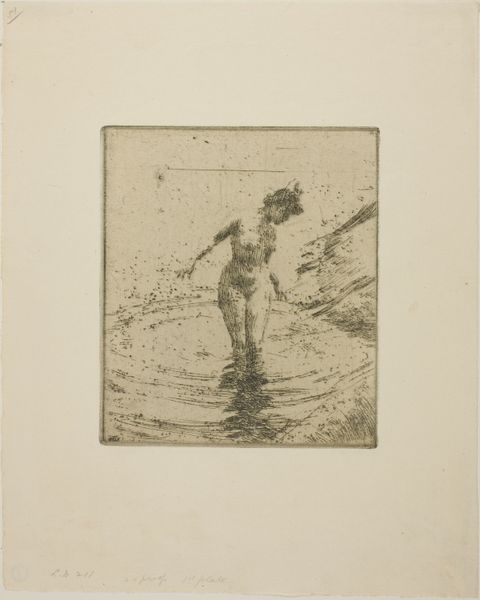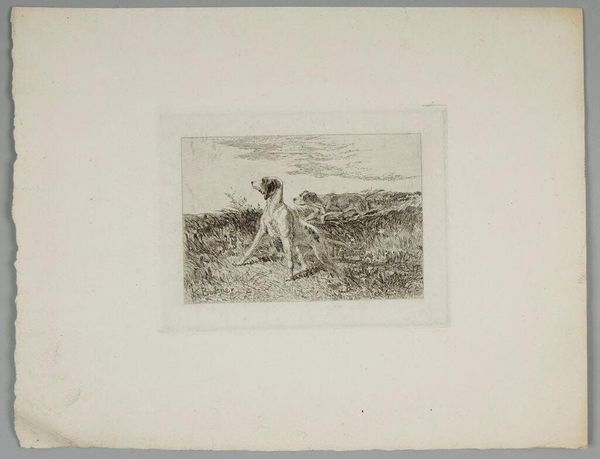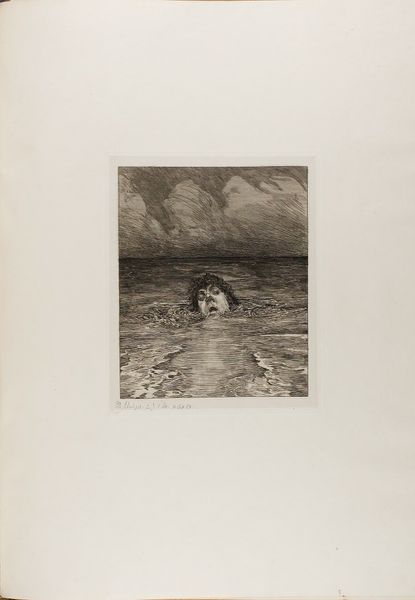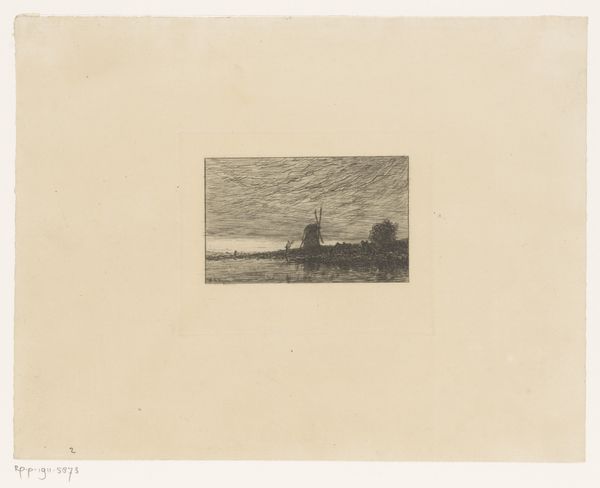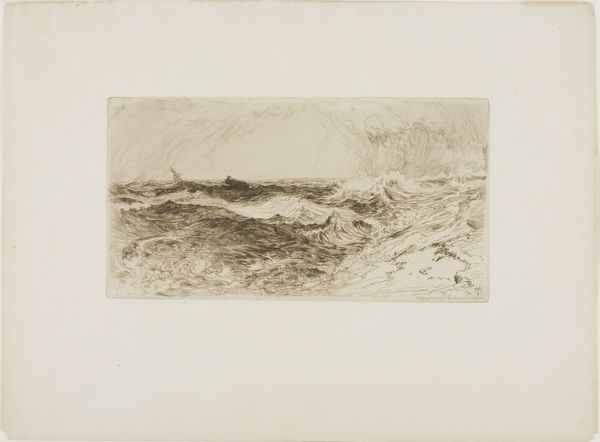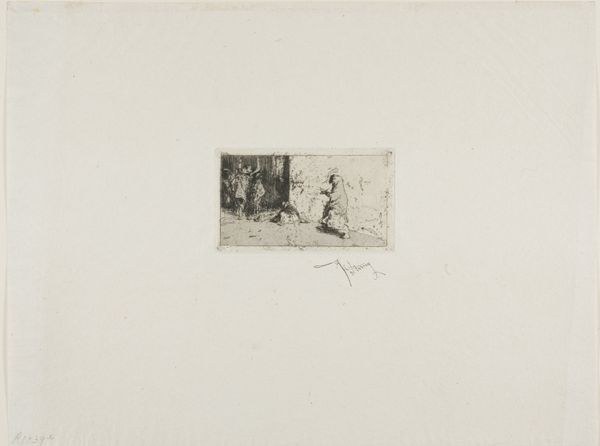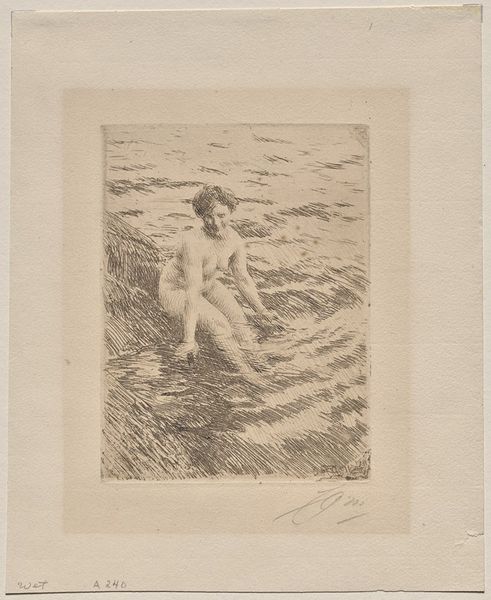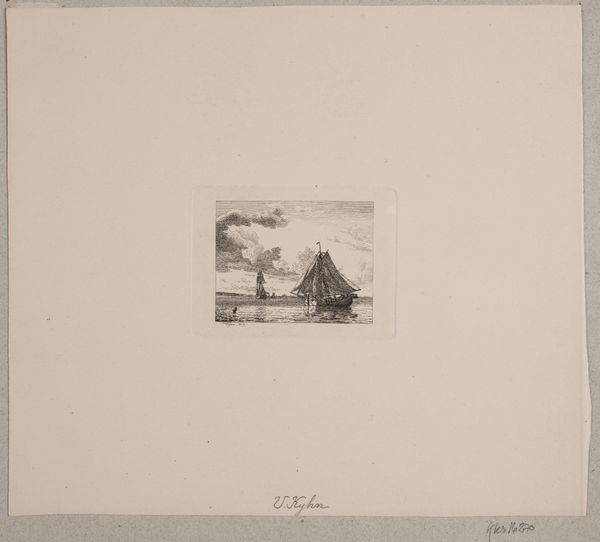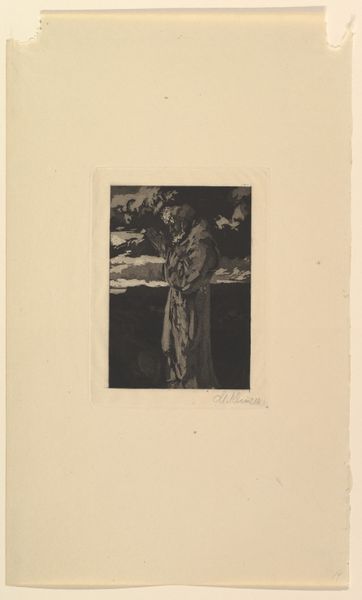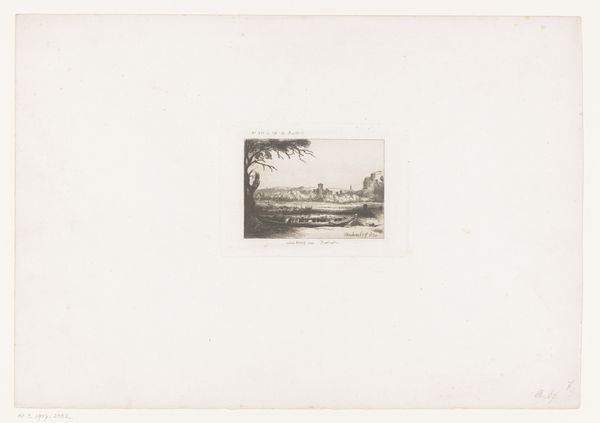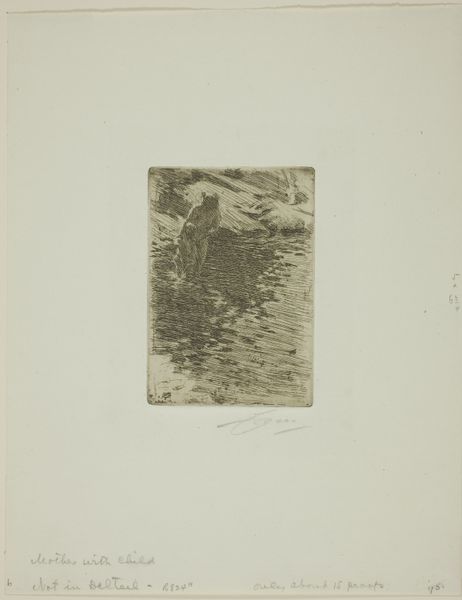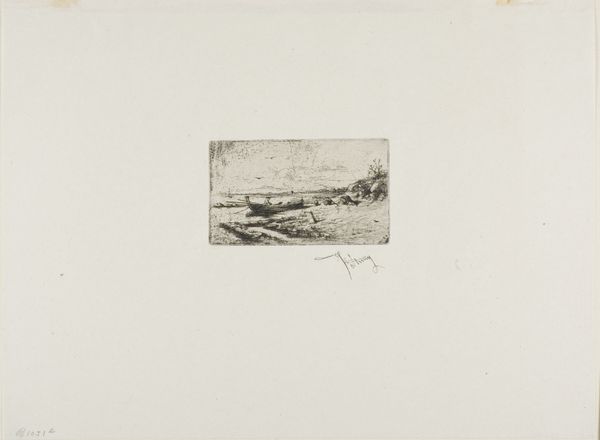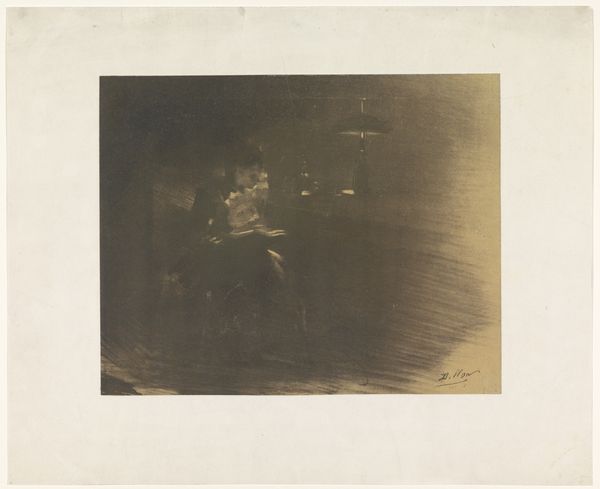
drawing, print, etching, paper
#
drawing
# print
#
etching
#
landscape
#
paper
#
genre-painting
#
nude
#
realism
Dimensions: 120 × 157 mm (image/plate); 300 × 400 mm (sheet)
Copyright: Public Domain
Editor: Anders Zorn's etching, "Mother Bathing," from 1894, depicts a figure wading in water. There's a real sense of immediacy, a stolen moment. What significance might there be in such everyday scenes being memorialized this way? Curator: This image really speaks to me about how we perceive and construct notions of beauty and intimacy. Think about it – water, across cultures, is almost universally a symbol of purification, of cleansing, and, often, of rebirth. Zorn presents the mother figure nude, almost dissolving into the water. Editor: So, are you saying this piece is not as simple as it appears? Curator: Not at all. The etching process itself contributes. Etching, unlike say, painting, is indirect. There's a distance, a layer of process that separates the artist’s hand from the final image. This distance can lend an almost dreamlike quality. Consider the act of bathing – a private, often ritualistic act. Zorn pulls us into this intimate space. Does the setting resonate with you? Editor: I can see a blurred line of trees in the distance; the figures feel isolated. Curator: Precisely. The woman stands nearly alone, and the surrounding nature reinforces her privacy, while also creating a timeless, placeless sanctuary. It allows us to tap into shared ideas of both mother and nature. It allows you to see not just *a* mother, but a sense of universal motherhood. Editor: It's fascinating how one can interpret these symbols that have such historical weight. I will certainly look at the piece with new eyes! Curator: Yes, I've been reminded that these domestic images function almost as archetypes. Everyday life holds rich material, and an image carries profound cultural memory.
Comments
No comments
Be the first to comment and join the conversation on the ultimate creative platform.
